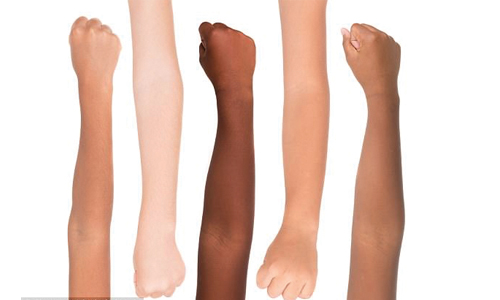Scientists pinpoint genes linked to human skin colours
Washington : Scientists who have long been studying diverse African groups said Thursday they have identified a handful of gene variants responsible for the vast range of skin colour on the African continent.
The findings, published in the U.S. journal Science, may shed light on the evolution of skin colour and inform an understanding of the genetic risk factors for conditions such as skin cancer.
“When people think of skin colour in Africa most would think of darker skin,” Sarah Tishkoff of the University of Pennsylvania, who led the study, said in a statement.
“But we show that within Africa there is a huge amount of variation, ranging from skin as light as some Asians to the darkest skin on a global level and everything in between.”
For the study, the researchers first took colour meter readings from the inner arms of more than 2,000 African participants to determine the levels of skin pigment melanin.
Then, from a subset of nearly 1,600 individuals, they sequenced and analyzed blood DNA and found four key areas of the genome where variation closely correlated with skin colour differences.
The region with the strongest associations was in and around the SLC24A5 gene, one variant of which is known to play a role in light skin colour in European and some southern Asian populations and is believed to have arisen more than 30,000 years ago.
This variant was common in populations in Ethiopia and Tanzania that were known to have ancestry from southeast Asia and the Middle East, suggesting it was carried into Africa from those regions and, based on its frequency, may have been positively selected.
The second strongest association was in a region containing the MFSD12 gene, which is expressed at low levels in depigmented skin in individuals with vitiligo, a condition where the skin loses pigment in some areas.
The team found that mutations in and around this gene that were associated with dark pigmentation were present at high frequencies in populations of Nilo-Saharan ancestry, who tend to have very dark skin, as well as across sub-Saharan populations, except the San, who tend to have lighter skin.
These variants were also identified in South Asian Indian and Australo-Melanesian populations, who tend to have the darkest skin coloration outside of Africa, suggesting a link between these people.
The researchers also found genetic variants at MFSD12, OCA2, and HERC2 associated with light skin pigmentation were at highest frequency in the African San population, which has the oldest genetic lineages in the world, as well as in Europeans.
A final genetic region the researchers found to be associated with skin pigmentation included genes that play a role in ultraviolet light response and melanoma risk.
The top candidate gene in the region is DDB1, involved in repairing DNA after exposure to UV light.
“Africans don’t get melanoma very often,” Tishkoff said. “The variants near these genes are highest in populations who live in areas of the highest ultraviolet light intensity, so it makes sense that they may be playing a role in UV protection.”
Overall, most of the genetic variants associated with light and dark pigmentation in the study appeared to have originated more than 300,000 years ago, and some emerged roughly one million years ago, well before the emergence of modern humans.
The older version of these variants in many cases was the one associated with lighter skin, suggesting that perhaps the ancestral state of humans was moderately pigmented rather than darkly pigmented skin.
“If you were to shave a chimp, it has light pigmentation,” Tishkoff said, “so it makes sense that skin colour in the ancestors of modern humans could have been relatively light.”
“It is likely that when we lost the hair covering our bodies and moved from forests to the open savannah, we needed darker skin. Mutations influencing both light and dark skin have continued to evolve in humans, even within the past few thousand years.”
How was it done?
To capture the range of skin pigmentation in Africa, the researchers used a colour meter to measure the light reflectance of the skin.
They did this for more than 2,000 Africans from ethnically and genetically diverse populations.
They took the measurement from the inner arm, when sun exposure is minimal. The measurements can be used to infer levels of the skin pigment melanin.
They obtained a range of measurements; the darkest skin was observed in Nilo-Saharan pastoralist populations in eastern Africa, and the lightest skin was observed in San hunter-gatherer populations in southern
Africa.
The researchers also obtained genetic information from nearly 1,600 people, examining more than 4 million single nucleotide polymorphisms across the genome.
These are places where the DNA code may differ by one ‘letter.’
From this dataset the researchers found four key areas of the genome where variation closely correlated with skin colour differences.
Related Posts


